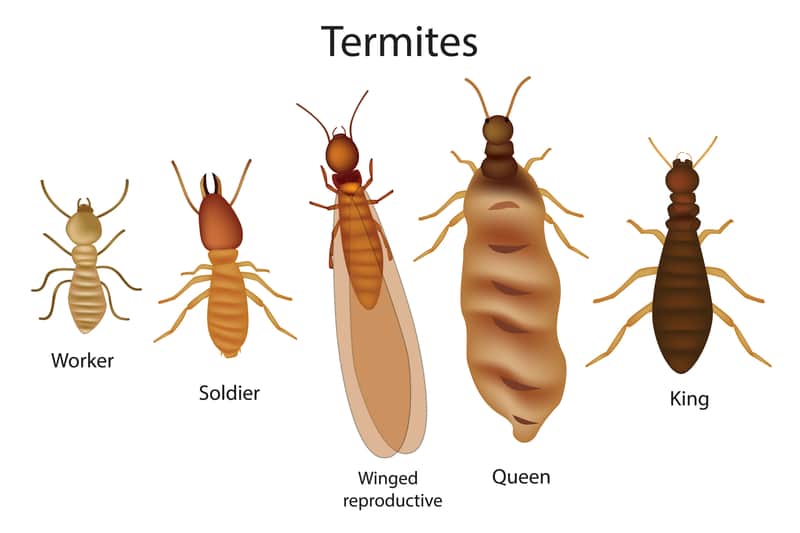
If you had to pick one insect that will probably never go extinct, you'd do well to choose the termite. They’ve been with us for about 250 million years (there are at least 2,000 species of them scattered around the world) and it’s quite possible that there are thousands of subterranean termites living in colonies in the soil beneath, or around, your house right now.
Of course, one of the last things any homeowner wants is a termite infestation in his or her home or business. That's why it's important to know how to identify termites and learn the steps you can take to help prevent a termite invasion.
THE MOST COMMON TYPES OF TERMITES IN THE UNITED STATES
Eastern Subterranean Termites
As their name suggests, these termites nest beneath the ground in the soil. They are also the most common species of termites infesting homes in the U.S. Unfortunately, eastern subterranean termites don’t care where the wood they devour comes from, and their search often brings them into our homes and businesses. They invade this wood by constructing mud tubes (or passageways) from their nests in the soil into homes where they feed on the wood structure, which over time, can cause a lot of damage. Seeing these mud tubes is a sign that you have termite activity in your home.
Formosan Subterranean Termites
Formosan subterranean termites are in many ways more threatening than other species of subterranean termites. They're generally perceived as more aggressive when it comes to feasting on wood structures. This is in large part due to the potential size of their colonies. The colony’s queen can live up to 15 years, laying 2,000 eggs per day, and a mature colony can have millions of members. More termites means more members devouring the wood of a structure, as well as more members foraging. Again, as with other species of subterranean termites, visible mud tubes are a good indication of termite activity in your home.
Drywood Termites
These termites live inside wood and get the moisture they need to survive either from the wood itself or from humidity in the air. This is why drywood termites are often found in humid, coastal areas.
Colonies of drywood termites are much smaller than those of subterranean termites, and a mature colony may have only a few hundred or few thousand members. The winged males and females mate and create new colonies in a crack or other opening in wood.
In addition to the presence of swarmers, piles of fecal material known as "frass" are another sign of a drywood termite invasion. When in a pile, frass can look like sawdust or sand and is frequently found near windowsills and doors. Since drywood termites do not nest in the soil, mud tubes are not a sign of their presence.
TERMITE PROTECTION
Some signs of termite activity were mentioned above. These signs can vary based on the species of termite you're dealing with. When you notice these signs, you should call on a termite control professional to help you deal with this potentially serious situation rather than trying any DIY treatments.
Even if you don't yet notice any signs of termites in your home, it's a good idea to have a professional annually inspect your home for termite activity, as termites feast 24/7 and are constantly foraging. Just because termites haven't invaded your home yet doesn't mean they'll always stay away.
Contact Terminix® today for help. When you schedule your free Terminix termite inspection, a trained termite control professional will inspect your home for signs of termite activity and termite entry points. If termites are found, you'll be presented a termite treatment plan based on your specific situation. If no termite activity is found, then Terminix also offers plans to help protect you from the cost of any potential future termite activity.


